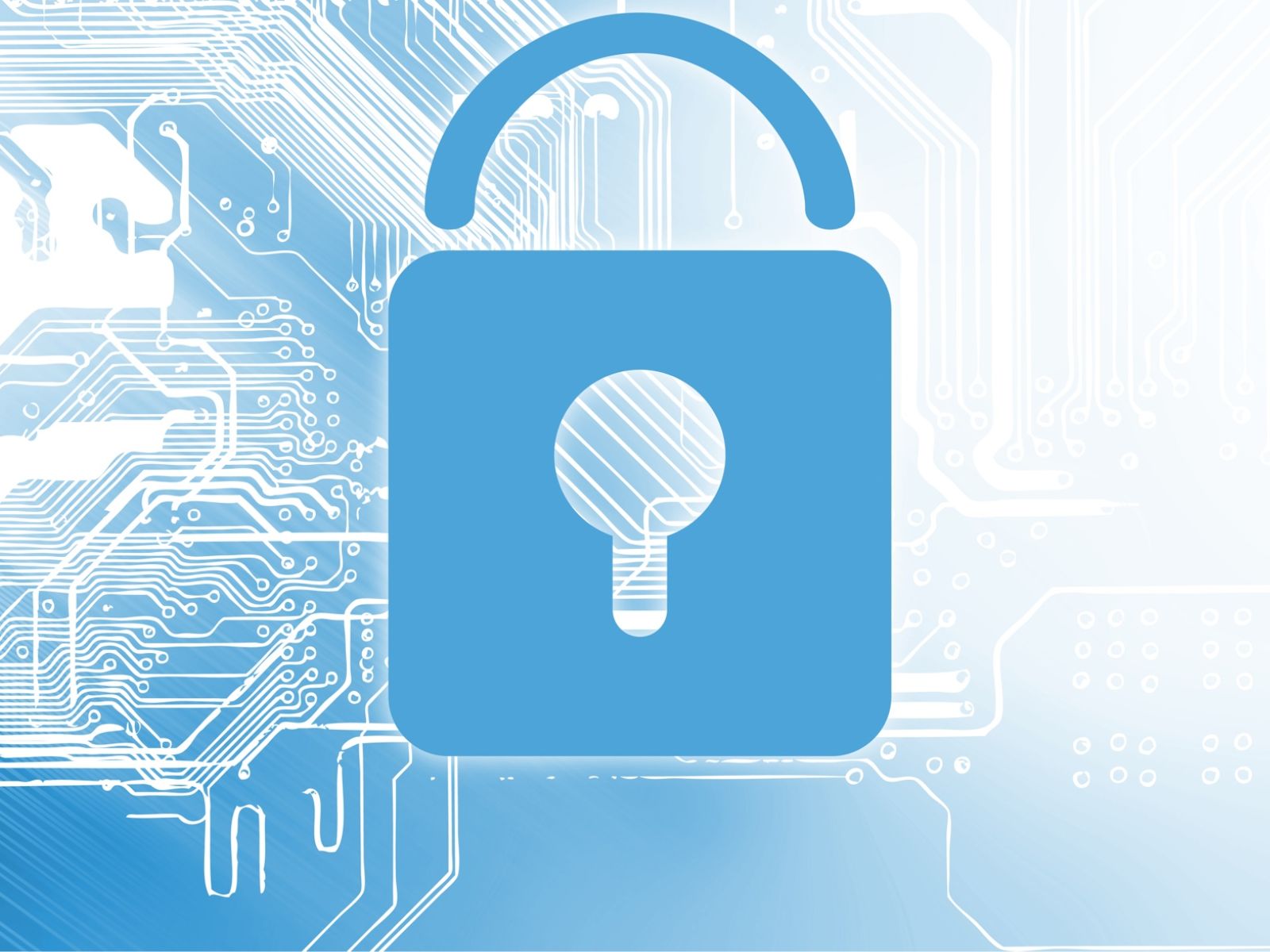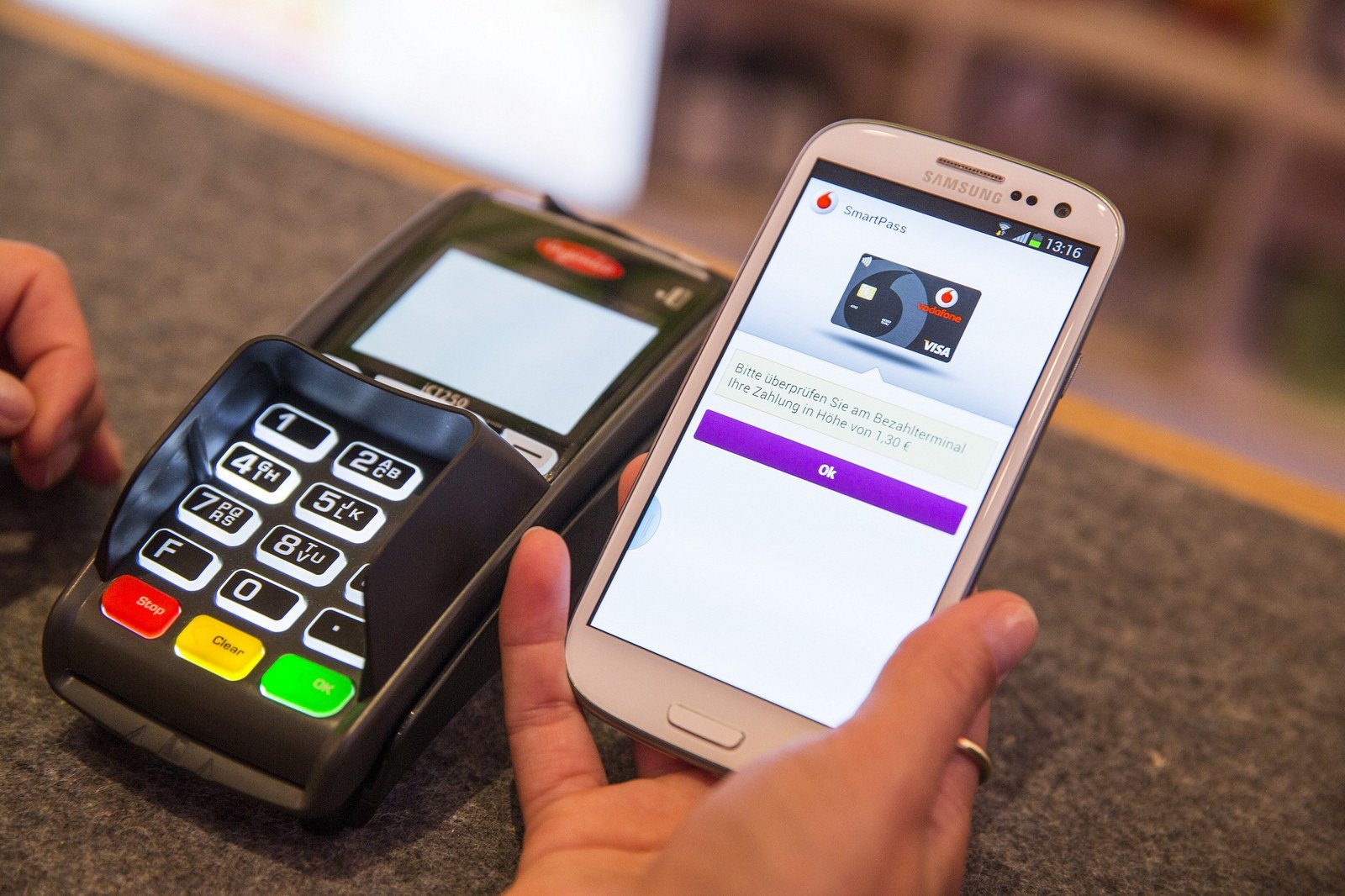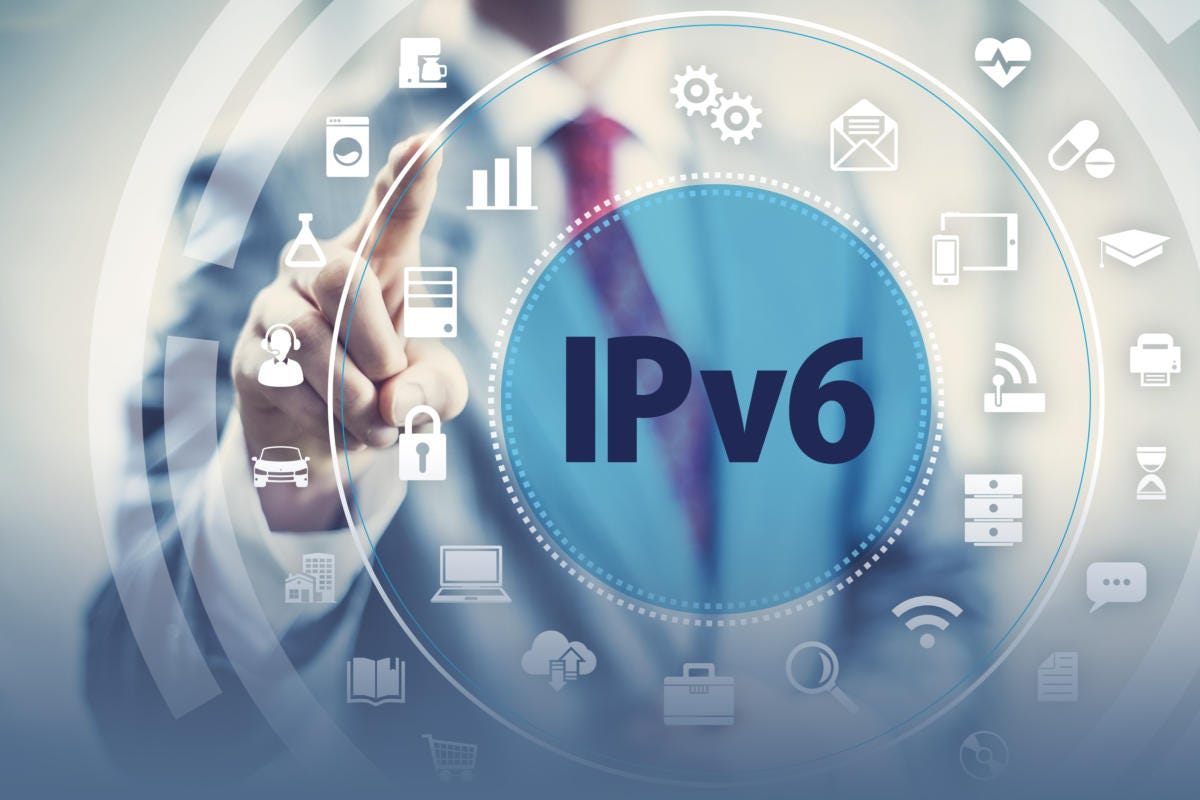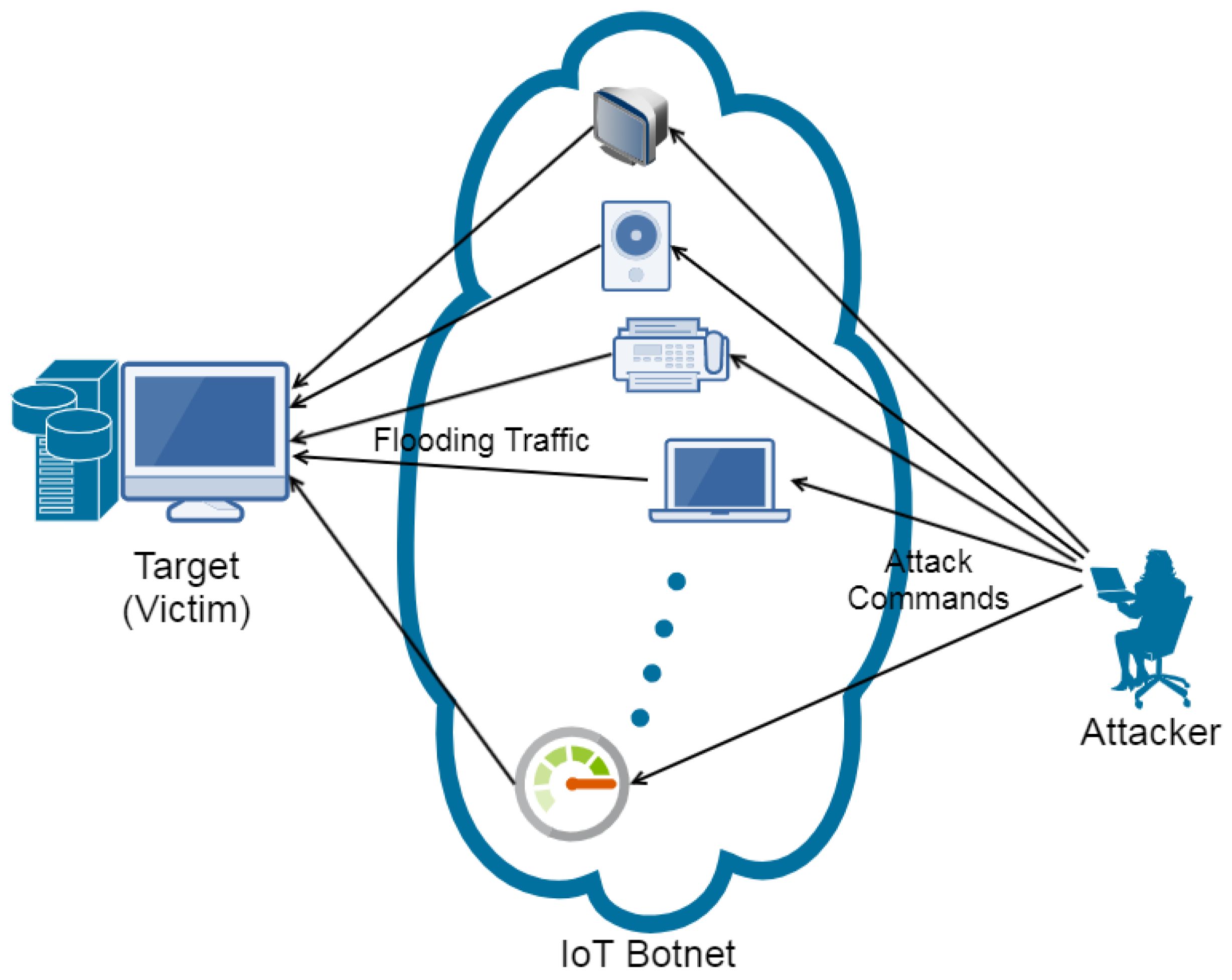Introduction
The Internet of Things (IoT) has revolutionized the way we live and work, connecting various devices and allowing them to communicate and exchange data. From smart homes to industrial automation, IoT has transformed multiple industries and significantly improved efficiency and convenience. However, with the increasing number of connected devices, the need for robust IoT security has become more critical than ever before.
IoT security refers to the measures and practices put in place to protect IoT devices and the data they gather and transmit. As IoT devices become more prevalent in our daily lives, ensuring their security is paramount to safeguarding our privacy, preventing unauthorized access, and mitigating the risks of cyberattacks.
In this article, we will explore why IoT security is of utmost importance and the potential threats that IoT devices face. We will also delve into the challenges that arise when securing IoT devices and provide some best practices to enhance IoT security.
What is IoT?
The Internet of Things (IoT) refers to the network of interconnected devices, objects, and systems that communicate and share data with each other over the internet. These devices, often embedded with sensors, collect and transmit data, enabling them to interact with their environment and operate autonomously.
IoT encompasses a wide range of devices, including smart home appliances, wearable devices, industrial machinery, and even vehicles. These devices can be controlled remotely and provide real-time data insights, enabling businesses and individuals to make informed decisions and streamline operations.
One of the key features of IoT is its ability to enable seamless connectivity between devices. This connectivity allows devices to collaborate and share information, leading to increased efficiency and automation. For example, a smart home system can adjust the temperature based on the weather conditions outside, or a fleet management system can optimize routes based on traffic data.
IoT technology has the potential to revolutionize various industries, including healthcare, manufacturing, transportation, and agriculture. In healthcare, for instance, IoT devices can monitor patients remotely and provide valuable health data to healthcare providers. In agriculture, IoT sensors can monitor soil moisture levels and automate irrigation systems.
Overall, IoT is transforming the way we interact with our surroundings and bringing about a new era of technological advancement. However, the widespread adoption of IoT also raises concerns about privacy, data security, and the potential risks associated with interconnected devices. It is crucial to understand the importance of IoT security and implement measures to protect these devices and the data they generate.
Importance of IoT Security
As IoT devices become more prevalent in our homes, businesses, and industries, ensuring their security is critical. Here are some key reasons why IoT security is of utmost importance:
Privacy Protection: IoT devices collect a massive amount of data about users, their behaviors, and their environments. This data, if left unprotected, can be vulnerable to unauthorized access and misuse. Implementing robust security measures ensures that sensitive information remains confidential and that user privacy is protected.
Prevention of Unauthorized Access: IoT devices are vulnerable to cyberattacks, and without adequate security measures, they can be easily compromised. Unauthorized access to IoT devices can result in unauthorized control, tampering with settings, or even malicious activities. Protecting IoT devices with strong authentication and encryption mechanisms is crucial to prevent unauthorized access.
Protection Against Data Breaches: IoT devices often process and transmit sensitive data, including personally identifiable information (PII). A breach in IoT security can expose this data to hackers, resulting in identity theft, fraud, and other serious consequences. By implementing robust security protocols, data breaches can be minimized, and the integrity of sensitive information can be preserved.
Prevention of Malware and Ransomware Attacks: IoT devices can become targets for malware and ransomware attacks. Malicious software can exploit vulnerabilities in IoT devices, compromising their functionality and providing a gateway for hackers to launch further attacks. Securing IoT devices through regular updates, patches, and implementing security measures can help prevent such attacks.
Protection Against Botnets: IoT devices can be hijacked and enlisted into botnets, which are networks of compromised devices controlled by hackers. These botnets can be used for distributed denial-of-service (DDoS) attacks, targeting websites, networks, or services. By ensuring IoT devices are secure and protected, the risk of becoming a part of a botnet can be significantly reduced.
By understanding the importance of IoT security and taking proactive measures to protect IoT devices, we can enjoy the benefits of this transformative technology while reducing the potential risks associated with it.
Threats to IoT Security
With the rapid proliferation of IoT devices, the security of these interconnected devices has become a major concern. Here are some significant threats to IoT security that need to be addressed:
Unauthorized Access: One of the primary threats to IoT security is unauthorized access. Hackers can exploit vulnerabilities in IoT devices to gain unauthorized access, allowing them to control the devices, gather sensitive information, or launch further attacks.
Data Privacy: IoT devices collect and transmit a vast amount of data, including personal and sensitive information. If this data is not properly secured, it can be intercepted or accessed by unauthorized parties, leading to privacy breaches and potential misuse of the information.
Malware and Ransomware Attacks: IoT devices are susceptible to malware and ransomware attacks. Malicious software can infect IoT devices and disrupt their functionality or hold them hostage until a ransom is paid. These attacks can have severe consequences, including data loss, device malfunctions, and compromise of sensitive information.
Botnets: IoT devices can be compromised and enlisted into botnets, which are networks of interconnected devices controlled by hackers. These botnets can be used to launch large-scale cyberattacks, such as DDoS attacks, causing disruption to websites, networks, and services.
Additionally, other threats to IoT security include inadequate authentication and authorization mechanisms, lack of regular security updates and patches, and vulnerabilities in IoT protocols. These threats highlight the importance of implementing strong security measures to protect IoT devices and mitigate the risks associated with interconnected technologies.
Unauthorized Access
Unauthorized access is a significant threat to the security of IoT devices. Hackers can exploit vulnerabilities in these devices to gain unauthorized access, allowing them to control the devices remotely or gather sensitive information. The consequences of unauthorized access can be severe, including privacy breaches, device manipulation, and even the potential for launching further attacks.
One common method used by hackers to gain unauthorized access is by exploiting weak or default passwords. Many IoT devices come with default credentials that are easy to guess or known to hackers. By simply guessing or using default logins, hackers can gain access to the device, potentially compromising the entire network or exposing sensitive information.
Another method of unauthorized access is through brute-force attacks, where hackers systematically try different combinations of passwords until they find the correct one. This method can be effective if the device’s authentication mechanism is weak or if the password is easy to guess.
Additionally, vulnerabilities in IoT devices can be exploited to gain unauthorized access. These vulnerabilities can include software flaws, outdated firmware, or insecure communication protocols. Hackers can exploit these vulnerabilities to bypass security measures and gain control over the devices.
Unauthorized access to IoT devices can have severe consequences. For example, an attacker gaining control of a smart home device can manipulate settings, unlock doors, or turn off security systems, compromising the safety and privacy of the homeowners. In an industrial setting, unauthorized access to critical infrastructure can lead to operational disruptions, financial losses, and even endanger human lives.
To mitigate the risk of unauthorized access, it is crucial to implement strong authentication mechanisms for IoT devices. This includes using complex and unique passwords, enforcing two-factor authentication, and regularly updating device firmware to fix security vulnerabilities. Additionally, network segmentation and isolation can limit the impact of a compromised device, as it restricts the hacker’s access to other parts of the network.
By understanding the threat of unauthorized access and implementing robust security measures, the risks associated with IoT devices can be minimized, ensuring the privacy, integrity, and functionality of these devices and the data they collect and transmit.
Data Privacy
Data privacy is a critical concern when it comes to IoT devices. These interconnected devices collect and transmit a vast amount of data, including personal and sensitive information. Without proper security measures in place, this data can be vulnerable to unauthorized access and misuse, potentially leading to privacy breaches and significant consequences for individuals and organizations.
One of the main aspects of data privacy is ensuring that the data collected by IoT devices is encrypted during transmission. Encryption ensures that even if the data is intercepted, it cannot be deciphered without the proper decryption keys. Implementing strong encryption protocols, such as Transport Layer Security (TLS), helps protect the confidentiality and integrity of data while in transit.
Another important aspect of data privacy is data storage. IoT devices often store data locally or transmit it to cloud servers for analysis. It is crucial to secure these storage mechanisms to prevent unauthorized access to sensitive data. Secure access controls, such as role-based access control (RBAC), can limit access to data based on user roles and minimize the risk of unauthorized parties gaining access to the data.
Individuals also have a responsibility to protect their own data privacy when it comes to IoT devices. This includes being cautious about the types of information shared with IoT devices and understanding the data collection practices of the devices they use. It is important to review and understand the privacy policies and data handling practices of IoT device manufacturers to ensure that personal information is handled with care and not shared unnecessarily.
In addition, regulations such as the General Data Protection Regulation (GDPR) in the European Union have been put in place to ensure that individuals have control over their personal data and that organizations handle it responsibly. These regulations impose strict requirements on organizations to protect personal data and ensure transparency in data collection and usage.
To safeguard data privacy, organizations should implement privacy-by-design principles when developing IoT devices. This includes incorporating privacy features from the outset, conducting privacy impact assessments, and implementing privacy controls at every stage of the device’s lifecycle.
By prioritizing data privacy and implementing robust security measures, individuals and organizations can ensure that the data collected by IoT devices remains confidential and protected from unauthorized access, enhancing both user trust and the overall security of IoT ecosystems.
Malware and Ransomware Attacks
Malware and ransomware attacks pose significant threats to the security of IoT devices. Malicious software can infect IoT devices, compromising their functionality, and providing a gateway for hackers to launch further attacks or extort victims for financial gain. Understanding and mitigating these threats is crucial to protect the integrity of IoT devices and the data they process.
Malware attacks on IoT devices can take various forms. For instance, IoT malware can exploit vulnerabilities in device operating systems or applications, allowing hackers to gain unauthorized access or control over the devices. Once compromised, these devices can be used to launch attacks on other devices or networks, disrupting operations and compromising data security.
Ransomware attacks are particularly concerning for IoT devices. In a ransomware attack, hackers encrypt the data on the device and demand a ransom in exchange for the decryption key. If the ransom is not paid, the data remains inaccessible or is permanently deleted. Ransomware attacks on IoT devices can have severe consequences, such as disrupting critical infrastructure, causing financial losses, or compromising the privacy of individuals and organizations.
To protect IoT devices against malware and ransomware attacks, several measures can be taken. Regularly updating and patching IoT device firmware is crucial, as it helps fix known vulnerabilities and strengthens the device’s defenses against malware attacks.
Implementing strong authentication mechanisms, such as complex passwords or biometric authentication, can also help prevent unauthorized access and reduce the risk of malware infections. Network segmentation, separating IoT devices from critical systems and limiting their communication with other devices, can minimize the impact of malware spreading throughout the network.
Additionally, deploying intrusion detection and prevention systems (IDPS) can help detect and block suspicious activities and malware signatures in real-time, enhancing the overall security of IoT ecosystems. Monitoring network traffic and analyzing log data can provide insights into potential malware infections or abnormal behavior, enabling proactive mitigation measures.
Education and awareness also play a vital role in mitigating malware and ransomware attacks. Users should be informed about the risks associated with IoT devices and trained on safe practices, such as avoiding suspicious downloads or links, regularly updating device firmware, and maintaining backups of important data.
By proactively addressing the risks posed by malware and ransomware attacks, IoT device users can better protect their devices, ensure the integrity of their data, and minimize the potential damage caused by cybercriminals.
Botnets
Botnets pose a significant threat to the security of IoT devices. A botnet refers to a network of compromised devices that are controlled by a malicious actor. These compromised devices, often IoT devices, are unwittingly enlisted into the botnet, allowing the attacker to use them for various malicious activities, such as launching distributed denial-of-service (DDoS) attacks or spreading malware.
The size and power of botnets can vary significantly, ranging from a few hundred to tens of thousands of compromised devices. These botnets can be used to overwhelm websites, networks, or services by flooding them with a massive amount of traffic, causing disruption and potential financial losses.
Botnets can be created by exploiting vulnerabilities in IoT devices, such as weak or default passwords, outdated firmware, or insecure communication protocols. Once a device is compromised, it can be used to infect other vulnerable devices, leading to the exponential growth of the botnet.
Protecting IoT devices against botnets requires several measures. The first line of defense is to ensure that IoT devices are securely configured, including setting strong and unique passwords, disabling unnecessary services or ports, and regularly updating their firmware.
Network segregation is another crucial measure to prevent botnets. By separating IoT devices from critical systems or sensitive data, the impact of a compromised device can be limited, and the potential for the spread of the botnet can be minimized. Implementing network segmentation can be achieved through the use of VLANs (Virtual Local Area Networks) or network firewalls.
Intrusion detection and prevention systems (IDPS) play a vital role in detecting and blocking botnet activities. These systems analyze network traffic and look for patterns or signatures associated with known botnets, enabling proactive mitigation and blocking capabilities.
Moreover, regular security audits and vulnerability assessments of IoT devices and network infrastructure can help identify potential weaknesses and take appropriate measures to mitigate them. It is essential to stay up to date with security patches and firmware updates provided by IoT device manufacturers to fix any known vulnerabilities.
Lastly, user awareness and education are crucial in preventing the spread of botnets. Users should be educated about the risks associated with IoT devices, including the importance of strong passwords, the risks of using default settings, and the need for regular updates and security measures.
By implementing robust security measures, staying vigilant, and adopting best practices, IoT device users can help combat the threat of botnets, minimizing the potential for large-scale attacks and protecting the integrity of IoT ecosystems.
Challenges in Securing IoT Devices
Securing IoT devices poses several challenges due to the unique characteristics and vast number of interconnected devices. These challenges need to be addressed to ensure the integrity, privacy, and security of IoT ecosystems. Here are some of the key challenges in securing IoT devices:
Inadequate Authentication and Authorization: Many IoT devices come with weak authentication mechanisms or default credentials that are easily guessable. This lack of strong authentication and authorization measures makes it easier for attackers to gain unauthorized access to IoT devices and compromise their security.
Lack of Regular Security Updates: IoT devices often have limited computing resources and may not receive regular security updates or patches from manufacturers. This can leave these devices vulnerable to known security vulnerabilities, as attackers can exploit these weaknesses to gain unauthorized access or disrupt their functionality.
Vulnerabilities in IoT Protocols: IoT devices utilize various communication protocols, such as Wi-Fi, Bluetooth, or Zigbee, to connect to each other and to the internet. However, these protocols may have inherent vulnerabilities that can be exploited by attackers. Ensuring the security of these protocols and addressing any vulnerabilities is essential to protect IoT devices from potential attacks.
Complexity and Heterogeneity: The sheer number and diverse range of IoT devices make managing and securing them a complex task. IoT ecosystems often comprise devices from different manufacturers, using different platforms, protocols, and operating systems. This complexity makes it challenging to implement consistent security measures across all devices, leaving potential gaps in security.
Limited Computing Resources: IoT devices are typically designed with limited computing power, memory, and battery life to optimize their functionality and cost-effectiveness. These constraints can make it challenging to implement robust security measures, as resource-intensive security protocols may impact device performance or drain their battery quickly.
Lifecycle Management: IoT devices have various lifecycles, from production to deployment and eventual retirement. Throughout this lifecycle, it can be difficult to ensure that devices remain up to date with the latest security patches and updates, as well as properly decommissioned to prevent potential security risks.
Addressing these challenges requires collaboration and collective effort from IoT device manufacturers, industry standards organizations, and regulatory bodies. The implementation of guidelines, frameworks, and regulations can establish minimum security requirements for IoT devices, ensuring that security is prioritized from the design and production stages.
Moreover, user awareness and education are crucial to promoting secure practices among IoT device users. Through proper training and education, users can understand the importance of keeping devices updated, using strong authentication mechanisms, and being vigilant against potential cyber threats.
By overcoming these challenges and implementing appropriate security measures, the security and trustworthiness of IoT devices can be enhanced, enabling the realization of the full potential of IoT technology while mitigating risks to users and organizations alike.
Inadequate Authentication and Authorization
Inadequate authentication and authorization mechanisms are a significant challenge in securing IoT devices. Many IoT devices come with weak authentication methods or default credentials that are easily guessable, leaving them vulnerable to unauthorized access and compromise. Addressing these vulnerabilities is crucial to ensure the security and integrity of IoT ecosystems.
Weak authentication mechanisms, such as simple passwords or no authentication at all, create opportunities for attackers to gain unauthorized access to IoT devices. For example, devices with default credentials that are widely known to hackers can be easily targeted, allowing attackers to take control of the device and potentially compromise the entire network.
Additionally, insufficient authorization mechanisms can also contribute to the vulnerability of IoT devices. When authorization is not properly implemented, it becomes easier for attackers to bypass security measures and gain unauthorized access to devices and the data they hold. This can result in unauthorized manipulation of device settings, theft of sensitive information, or the launch of further attacks within the network.
To address the challenge of inadequate authentication and authorization in IoT devices, it is essential to implement strong authentication mechanisms. This includes enforcing the use of complex and unique passwords, requiring multi-factor authentication, or leveraging biometric authentication methods. By using strong authentication, the risk of unauthorized access is significantly reduced, as attackers will have a much harder time guessing or bypassing the access credentials.
Furthermore, implementing robust authorization mechanisms is equally important. Role-based access control (RBAC) can be utilized to grant specific permissions and access levels to users based on their roles. This ensures that only authorized individuals have the necessary privileges to control or access IoT devices or their data, reducing the risk of unauthorized manipulation or misuse of the devices.
Device manufacturers also play a crucial role in improving authentication and authorization in IoT devices. They should prioritize the development and implementation of secure authentication and authorization frameworks during the design phase. This includes encrypting communication channels, storing passwords securely, and regularly updating device firmware to address any security vulnerabilities and weaknesses.
It is important for users to be aware of the weak authentication and authorization mechanisms employed by IoT devices. They should be educated on the importance of changing default credentials, regularly updating device firmware, and utilizing strong and unique passwords. By promoting secure practices among users, the risks associated with inadequate authentication and authorization can be significantly reduced.
Addressing the challenge of inadequate authentication and authorization requires collaboration among manufacturers, industry standards organizations, and regulatory bodies. Establishing industry-wide security standards and guidelines can ensure that IoT devices adhere to a minimum level of security, making them less susceptible to unauthorized access and compromise.
By implementing strong authentication and authorization mechanisms and promoting user education, the security of IoT devices can be enhanced, enabling users to confidently utilize these devices while maintaining the privacy and integrity of their data.
Lack of Regular Security Updates
The lack of regular security updates is a significant challenge in securing IoT devices. Many IoT devices, due to their limited computing resources or inadequate support from manufacturers, do not receive timely security updates or patches. This leaves these devices vulnerable to known security vulnerabilities and increases the risk of compromise or exploitation by attackers. Addressing this challenge is crucial to ensure the ongoing security and integrity of IoT ecosystems.
Regular security updates and patches are essential for IoT devices as they help fix known vulnerabilities and weaknesses in the device’s software or firmware. These updates often include security patches that address newly discovered vulnerabilities or address other security-related issues. Without regular updates, IoT devices become more susceptible to attacks and compromise, posing risks to both end-users and the larger network infrastructure.
The lack of regular security updates is often influenced by various factors. One of these factors is the limited computing resources of IoT devices. These devices are designed to have low power consumption and minimal processing capabilities to optimize their functionality and prolong battery life. As a result, the resources available for implementing security measures may be limited, making it challenging to regularly update and patch the devices.
Another contributing factor is the negligence or lack of commitment from device manufacturers. Some manufacturers may prioritize cost and time-to-market over security, resulting in inadequate support for security updates or minimal interaction with the devices once they are sold. This lack of manufacturer involvement can significantly hinder the timely delivery of security updates to IoT devices, making them vulnerable to known threats.
To address the challenge of the lack of regular security updates, collaboration between device manufacturers, industry organizations, and regulatory bodies is crucial. Manufacturers need to prioritize security and commit to providing regular updates and patches to address known vulnerabilities. This involves establishing secure update mechanisms that are efficient, reliable, and user-friendly.
Furthermore, it is essential for users to be proactive in ensuring the security of their IoT devices. They should regularly check for updates and patches provided by the manufacturer and promptly apply them to their devices. Being aware of the risks associated with outdated firmware and actively seeking security updates can significantly reduce the vulnerability of IoT devices.
Regulatory bodies can play a role in driving manufacturers to prioritize security updates. They can establish standards and regulations that require manufacturers to provide ongoing support and updates for IoT devices for a specified period. This can incentivize manufacturers to invest in security measures and ensure the longevity and security of their products.
Furthermore, promoting user education and awareness on the importance of regular security updates is essential. Users should understand the risks associated with outdated firmware and the potential consequences of not applying security patches promptly. This awareness can empower users to take proactive steps in maintaining the security of their devices.
By addressing the challenge of the lack of regular security updates through collaborative efforts, IoT devices can be better protected against known vulnerabilities, reducing the risk of compromise and ensuring the ongoing security and integrity of IoT ecosystems.
Vulnerabilities in IoT Protocols
Vulnerabilities in IoT protocols present a significant challenge in securing IoT devices. IoT devices rely on various communication protocols, such as Wi-Fi, Bluetooth, Zigbee, or MQTT, to connect and exchange data with other devices and networks. However, these protocols can have inherent vulnerabilities that attackers can exploit to compromise the security of IoT devices and the data they transmit. Addressing these vulnerabilities is crucial to ensuring the integrity and privacy of IoT ecosystems.
One of the vulnerabilities in IoT protocols is the lack of encryption and authentication mechanisms. Without proper encryption, data transmitted between IoT devices and networks can be intercepted and accessed by unauthorized parties. Similarly, without robust authentication, attackers can impersonate legitimate devices or gain unauthorized access to IoT networks, potentially compromising the security and integrity of the entire system.
Another vulnerability is the lack of secure management and configuration interfaces for IoT devices. Insecure default settings or unauthenticated management interfaces can be exploited by attackers to gain unauthorized access to the devices. This can lead to device manipulation, unauthorized data access, or even control of the entire network infrastructure.
In addition, vulnerabilities can arise due to flaws or weaknesses in the implementation of IoT protocols. This can include coding errors, protocol design flaws, or insecure firmware. These vulnerabilities can be exploited by attackers to perform various types of attacks, such as denial-of-service (DoS) attacks, remote code execution, man-in-the-middle attacks, or data exfiltration.
To address the vulnerabilities in IoT protocols, robust security measures need to be implemented. This includes implementing strong encryption and authentication mechanisms to protect the confidentiality and integrity of data transmission. Protocols like TLS (Transport Layer Security) or Datagram Transport Layer Security (DTLS) can ensure secure communication between IoT devices and networks.
Manufacturers should also focus on secure design and implementation of IoT protocols. This involves adhering to industry best practices, conducting thorough testing and code review, and addressing any vulnerabilities or weaknesses in the protocol design. Regular firmware updates should be provided to fix any discovered vulnerabilities or security issues.
Furthermore, industry standards organizations play a crucial role in establishing guidelines and protocols that prioritize security. By setting standards for secure IoT communication protocols and promoting their adoption, these organizations can ensure that IoT devices and networks are built with security in mind from the outset.
Users also have a role to play in mitigating vulnerabilities in IoT protocols. They should ensure that IoT devices they purchase adhere to security standards and protocols and regularly update the firmware to address any security vulnerabilities. Additionally, users should be aware of the potential risks associated with insecure protocols and take precautions, such as using secure network connections and following best practices for device management.
By addressing the vulnerabilities in IoT protocols through collaboration between manufacturers, industry organizations, and users, the security of IoT devices can be significantly enhanced, safeguarding the privacy, integrity, and functionality of IoT ecosystems.
Best Practices for IoT Security
Securing IoT devices is crucial to protect the integrity, privacy, and functionality of these interconnected devices. Here are some best practices to enhance IoT security:
Use Strong Passwords and Two-Factor Authentication: Implement strong, unique passwords for IoT devices and change default credentials immediately. Additionally, enable two-factor authentication whenever possible to add an extra layer of security to device access.
Regularly Update and Patch IoT Devices: Keep IoT devices up to date with the latest firmware and security patches. Regular updates help address known vulnerabilities and protect against emerging threats.
Implement Network Segmentation: Separate IoT devices from critical systems and isolate them within separate network segments. This helps contain potential security breaches and limits the impact of compromised devices.
Encrypt Data Transmission: Use encryption protocols, such as Transport Layer Security (TLS), to secure data transmitted between IoT devices and networks. Encryption ensures that data remains confidential and cannot be intercepted by unauthorized parties.
Use Secure Protocols and Authentication Mechanisms: Implement secure communication protocols, such as Wi-Fi Protected Access (WPA2), and strong authentication mechanisms to ensure that only authorized devices can access IoT networks.
Employ Intrusion Detection and Prevention Systems: Utilize intrusion detection and prevention systems (IDPS) to monitor network traffic, detect and mitigate potential threats, and block malicious activities in real-time.
Implement Secure Device Lifecycle Management: Ensure that IoT devices are securely configured during deployment and regularly audited for security vulnerabilities. Properly decommission devices when they reach the end of their lifecycle to prevent potential security risks.
Regularly Monitor and Audit Device Activity: Continuously monitor IoT devices for unusual behavior or unauthorized access. Regularly audit device activity logs to identify potential security incidents and take immediate action to mitigate those threats.
Educate Users on IoT Security: Promote user awareness and education on IoT security best practices. Educate users on the risks associated with insecure practices and encourage them to follow secure habits, such as regularly updating firmwares and practicing caution with data sharing.
Collaboration and Industry Standards: Collaborate with manufacturers, industry organizations, and regulatory bodies to establish security standards and guidelines for IoT devices. Encouraging adherence to these standards ensures consistent and robust security measures across the IoT ecosystem.
By implementing these best practices, users and organizations can significantly enhance the security posture of IoT devices, minimize the risk of cyber threats, and ensure the safe and reliable functionality of their interconnected devices.
Use Strong Passwords and Two-Factor Authentication
The importance of using strong passwords and implementing two-factor authentication (2FA) cannot be overstated when it comes to securing IoT devices. Weak passwords and the use of default or easily guessable credentials are common avenues for attackers to gain unauthorized access to devices and compromise their security. Implementing strong passwords and 2FA are essential best practices for enhancing the security of IoT devices.
Use Strong Passwords: A strong password is generally long, complex, and unique. It should consist of a combination of upper and lowercase letters, numbers, and special characters. Avoid using obvious and easily guessable information such as names, birthdays, or commonly-used words. By creating strong passwords, the likelihood of attackers successfully cracking or guessing them is greatly reduced.
It is also crucial to avoid reusing passwords across multiple devices or online accounts. If one account or device is compromised, using the same password for other accounts or devices increases the risk of further security breaches. Instead, use a password manager to securely store and manage complex passwords for each IoT device.
Implement Two-Factor Authentication (2FA): Two-factor authentication adds an extra layer of security by requiring users to provide two forms of identification: something they know (password) and something they have (e.g., a temporary code sent to their mobile device). This additional step makes it significantly more difficult for attackers to gain unauthorized access to an IoT device, even if they manage to acquire the password.
There are several methods for implementing 2FA, such as text message verification codes, authenticator apps, or hardware tokens. Choose the method that best suits the needs and capabilities of the IoT device and ensure that it is compatible with the device’s authentication system.
By utilizing strong passwords and 2FA, the security of IoT devices can be greatly enhanced. However, it is important to remember that security measures are only effective if properly implemented and consistently maintained. Here are some additional tips for ensuring the effectiveness of password and 2FA practices:
Regularly Update Passwords: It is recommended to change passwords periodically, especially if there is a possibility of a security breach or if passwords have been shared with unauthorized users. Regularly updating passwords helps mitigate the risk of unauthorized access to IoT devices.
Stay Informed about Security Best Practices: Keep up to date with the latest security recommendations and best practices for password management and 2FA. Stay informed about new threats and vulnerabilities, and adjust security measures accordingly.
Enable Two-Factor Authentication Whenever Possible: Whenever a device or service offers the option for two-factor authentication, take advantage of it. This added layer of security significantly reduces the risk of unauthorized access, even if passwords are compromised.
By incorporating strong passwords and implementing two-factor authentication, users can significantly enhance the security of their IoT devices and protect them from unauthorized access and potential breaches. Following these best practices helps ensure the privacy, integrity, and reliability of IoT ecosystems.
Regularly Update and Patch IoT Devices
Regularly updating and patching IoT devices is a critical best practice for enhancing their security and mitigating the risk of potential vulnerabilities. As technology evolves and new threats emerge, manufacturers release updates and patches to address known security weaknesses. Keeping IoT devices up to date with the latest firmware and security updates is essential in maintaining a strong defense against potential security breaches.
Updates and patches for IoT devices often include fixes for discovered vulnerabilities, improvements in device performance, and enhancements to security protocols. By regularly updating devices, users can benefit from these enhancements and ensure that their devices are protected against the latest threats.
One of the primary reasons IoT devices require regular updates is the discovery of security vulnerabilities. As researchers identify new vulnerabilities, device manufacturers promptly work to develop and release patches to address these issues. Installing these updates is crucial in closing security gaps and reducing the risk of exploitation by hackers or malicious actors.
Furthermore, firmware updates often include improvements designed to enhance device performance, stability, and compatibility. By applying these updates, users can ensure their devices have access to the latest features, bug fixes, and optimizations, resulting in a smoother user experience and enhanced device functionality.
However, ensuring regular updates and patches for IoT devices can present certain challenges. Some devices may not have an automated update mechanism or lack support from manufacturers, making it the responsibility of the user to manually check for updates and apply them. In such cases, users should stay proactive and frequently check the manufacturer’s website or contact customer support to access the latest updates for their devices.
To establish a successful update and patch management routine, users can follow these best practices:
Enable Automatic Updates: If available, enable automatic updates on IoT devices. This ensures that devices receive and install updates seamlessly without the need for explicit user intervention. Automatic updates simplify the process and reduce the risk of missed or delayed updates.
Check for Updates Regularly: For devices that do not support automated updates, regularly check for updates through the device settings or manufacturer’s website. Set reminders to ensure updates are not overlooked, as delayed updates can leave devices vulnerable to known security threats.
Monitor Manufacturer Communications: Stay informed about announcements, alerts, or newsletters from device manufacturers. Manufacturers often communicate important information regarding updates, security patches, and potential vulnerabilities. Being aware of these communications can help users prioritize and apply updates promptly.
Update Devices in a Secure Environment: Whenever possible, update devices on secure networks to reduce the risk of intercepted or compromised updates. Avoid using public or unsecured Wi-Fi networks, as they can be susceptible to man-in-the-middle attacks, potential interception of sensitive information, or compromised updates.
Keep Devices Supported: When purchasing IoT devices, opt for products from reputable manufacturers that commit to long-term support and regularly release updates. Choosing devices with a history of consistent updates increases the likelihood of ongoing security and performance improvements.
By adhering to regular update and patch management practices, users can significantly enhance the security of their IoT devices, protect themselves against emerging threats, and ensure the longevity and privacy of their devices and the data they process.
Implement Network Segmentation
Implementing network segmentation is a crucial best practice for enhancing the security of IoT devices. Network segmentation involves dividing a network into distinct segments or subnetworks, isolating IoT devices from critical systems and other devices. This segmentation minimizes the potential impact of a security breach by limiting the attacker’s access to other parts of the network, thereby protecting sensitive information and mitigating the spread of threats.
One of the key advantages of network segmentation is reducing the attack surface. By isolating IoT devices in their dedicated network segment, potential vulnerabilities in these devices pose a lesser risk to critical systems or other non-IoT devices. Even if an IoT device is compromised, the segmented network limits the attacker’s ability to move laterally or gain unauthorized access to critical resources.
Additionally, network segmentation helps to prioritize security resources and focus efforts on protecting critical systems and data. By dividing the network, organizations can prioritize security measures, such as firewalls, intrusion detection systems (IDS), or access controls, based on the sensitivity and criticality of the resources in each segment. This targeted protection allows for more efficient resource allocation and stronger defense mechanisms.
Industrial control systems (ICS) or critical infrastructure often rely on IoT devices. Network segmentation in these environments is particularly vital as it separates IoT devices controlling critical operations from other networks, such as corporate networks, reducing the risk of unauthorized access or tampering with critical systems.
To implement network segmentation effectively, consider the following best practices:
Identify Network Segmentation Requirements: Determine the specific requirements for network segmentation based on business needs, compliance regulations, and the sensitivity of data and devices. Identify which devices should be grouped together and separated from other networks.
Segmentation techniques: Choose the appropriate segmentation techniques based on network architecture, such as virtual LANs (VLANs), virtual private networks (VPNs), or physical separation through dedicated network switches or subnets.
Access Control: Configure access control measures, such as firewalls and access control lists (ACLs), to restrict communication between different network segments. Define and enforce policies for traffic filtering and allow only necessary communication channels.
Network Monitoring: Implement monitoring tools to track network activity and detect any unauthorized attempts to breach or circumvent network segmentation. Real-time monitoring helps identify potential threats or unauthorized access and allows for timely response and mitigation.
Regular Updates and Patch Management: Update and patch network devices, such as routers and switches, regularly to address any known vulnerabilities. Vulnerable network devices can serve as entry points for attackers to bypass segmentation and compromise the overall network integrity.
Robust Authentication: Implement strong authentication mechanisms, such as unique credentials or digital certificates, for accessing different network segments. This prevents unauthorized users from gaining access to sensitive network areas.
By implementing network segmentation, organizations can enhance the security of IoT devices by isolating them from critical systems and reducing the potential impact of security breaches. It allows for more focused security measures, efficient resource allocation, and greater control over network traffic, ultimately ensuring the integrity and confidentiality of sensitive information and mitigating the risks associated with interconnected devices.
Encrypt Data Transmission
Encrypting data transmission is a crucial best practice for securing IoT devices and protecting the confidentiality, integrity, and privacy of the data they exchange. Encryption ensures that data is transformed into an unreadable format during transmission, making it difficult for unauthorized parties to intercept or decipher the information. By implementing robust encryption protocols, organizations can safeguard sensitive data and mitigate the risk of unauthorized access and data breaches.
Encryption protects data from eavesdropping and unauthorized tampering by ensuring that only authorized recipients with the appropriate encryption keys can decrypt and access the information. It adds an extra layer of security, even if the data is intercepted during transmission, as the encrypted data remains unreadable and useless to anyone without the decryption keys.
For IoT devices, it is essential to implement encryption at multiple layers of the communication stack. This includes encrypting data at the application layer, transport layer, and network layer. Each layer has its own encryption protocols and standards that provide different levels of security.
Application Layer Encryption: This involves encrypting the data at the application level, typically using protocols such as Secure Sockets Layer (SSL) or Transport Layer Security (TLS). These protocols ensure end-to-end encryption between the IoT device and the server or endpoint, protecting data privacy and integrity during transmission.
Transport Layer Encryption: Transport layer encryption secures data during communication between devices and networks. Protocols such as Secure Shell (SSH), Internet Protocol Security (IPsec), or Datagram Transport Layer Security (DTLS) can be used to encrypt data packets and ensure secure communication between IoT devices and the network.
Network Layer Encryption: Network layer encryption involves securing the data at the network level. Virtual private networks (VPNs) are commonly used to encrypt data traveling between IoT devices over public or untrusted networks, ensuring confidentiality and protecting against eavesdropping or interception.
Key management is an important aspect of encryption. Securely managing encryption keys is crucial to ensure the integrity and confidentiality of the encrypted data. Organizations need to establish proper key management practices, including key generation, distribution, storage, rotation, and revocation, to maintain robust encryption security.
Additionally, organizations should also consider the performance impact of encryption on IoT devices. IoT devices often have limited computing resources, so choosing encryption algorithms that strike the right balance between security and performance is essential. Lightweight encryption algorithms and hardware accelerators can be employed to optimize encryption efficiency on resource-constrained devices.
By implementing encryption for data transmission in IoT systems, organizations can protect sensitive information, prevent unauthorized access and tampering, and meet data protection requirements. Encryption ensures that data remains confidential and secure during transit, mitigating the risks associated with cyber threats and safeguarding the integrity of IoT ecosystems.
Use Secure Protocols and Authentication Mechanisms
Using secure protocols and authentication mechanisms is crucial for enhancing the security of IoT devices and protecting them from unauthorized access and data breaches. Secure protocols ensure that communication between IoT devices and other systems is encrypted and protected, while strong authentication mechanisms verify the identity of devices and users accessing the IoT network. Employing these security measures is essential for maintaining the confidentiality, integrity, and privacy of IoT data.
Secure Protocols: Implementing secure protocols for IoT communication is essential to protect data during transmission. Protocols such as Wi-Fi Protected Access (WPA2), Transport Layer Security (TLS), and Secure Shell (SSH) provide encryption and authentication mechanisms to ensure secure communication channels between IoT devices and networks.
Authentication Mechanisms: Robust authentication mechanisms verify the identity of devices and users accessing the IoT network, preventing unauthorized access. Multifactor authentication, such as combining passwords with biometric identification or hardware tokens, adds an extra layer of security by requiring multiple forms of verification.
Furthermore, organizations should establish guidelines for secure authentication practices, including avoiding the use of default credentials, implementing strong password policies, and enforcing regular password updates. Implementing two-factor authentication (2FA) or multi-factor authentication (MFA) is highly recommended for an added layer of security.
It is important to carefully select authentication mechanisms that align with the capabilities and resources of IoT devices. Lightweight authentication protocols or hardware-based authentication solutions can be implemented on resource-constrained devices to minimize performance impact while ensuring strong security.
Secure protocols and authentication mechanisms should also be complemented by secure certificate management. Digital certificates help ensure the authenticity and integrity of communication channels by validating the identity of devices and establishing secure connections. Organizations should implement proper certificate management practices, including certificate issuance, revocation, and renewal, to maintain a secure IoT ecosystem.
Regular audits and vulnerability assessments should be conducted to ensure the effectiveness of secure protocols and authentication mechanisms. Continuous monitoring and analysis of network traffic and system logs can help detect any unauthorized access attempts or suspicious activities, enabling proactive response and mitigation.
Ongoing monitoring and updates are essential as new threats and vulnerabilities continuously emerge. Organizations should stay informed about security best practices and industry standards for secure protocols and authentication mechanisms, ensuring that their IoT devices and networks remain robustly protected.
By using secure protocols and implementing strong authentication mechanisms, organizations can significantly enhance the security and integrity of their IoT deployments. These security measures provide the foundation for protecting sensitive data, preventing unauthorized access, and establishing trust in IoT systems.
Employ Intrusion Detection and Prevention Systems
Employing intrusion detection and prevention systems (IDPS) is crucial for enhancing the security of IoT devices and protecting against a wide range of cyber threats. IDPS provides real-time monitoring, detection, and prevention capabilities to identify and thwart potential intrusion attempts or malicious activities within an IoT network. Implementing IDPS complements other security measures and helps organizations maintain the integrity and confidentiality of their IoT ecosystems.
Real-time Monitoring: IDPS continuously monitors network traffic, system logs, and device activities to detect any abnormal or malicious behavior. By analyzing network data, it can identify patterns and signatures associated with known threats, anomalies, or suspicious activities that may indicate an ongoing attack.
Detection: IDPS uses various detection techniques, such as signature-based detection, anomaly detection, or behavior-based detection, to identify potential threats within the IoT network. Signature-based detection relies on known patterns or signatures of known attacks, while anomaly detection identifies deviations from normal behavior. Behavior-based detection analyzes patterns of activities and can identify abnormal or potentially malicious behavior.
Prevention: In addition to detecting potential intrusions or threats, IDPS can also actively prevent attacks by triggering automated responses or taking preventive measures. This may include blocking suspicious IP addresses, terminating malicious connections, or alerting security personnel for further investigation and response.
Implementing IDPS requires a multi-layered approach and involves the following practices:
Identify Security Requirements: Understand the specific security requirements and risks associated with the IoT ecosystem. This includes assessing the sensitivity of the data, the potential impact of a security breach, and the regulatory compliance requirements related to intrusion detection and prevention.
Choose the Right IDPS Solution: Select a suitable IDPS solution that meets the specific needs and requirements of the IoT network. Consider factors such as scalability, compatibility with IoT devices and protocols, and the ability to analyze high volumes of network traffic in real-time.
Regularly Update and Monitor IDPS: Keep the IDPS solution up to date with the latest threat intelligence and security updates. Regularly monitor and manage the IDPS to ensure its effectiveness in detecting and preventing intrusions, responding to emerging threats, and adapting to changing network environments.
Integrate IDPS with other Security Controls: IDPS should be integrated with other security controls, such as firewalls, access control mechanisms, or security information and event management (SIEM) systems. This integration provides a holistic approach to IoT security, enhances threat visibility, and allows for coordinated responses to incidents.
Automate Response and Remediation: To enhance the effectiveness and efficiency of IDPS, automate response actions whenever possible. Automated response mechanisms can quickly block or mitigate threats, reducing the impact of potential intrusions or attacks.
By employing intrusion detection and prevention systems, organizations can strengthen the security of their IoT devices and networks, detect and respond to potential intrusions in real-time, and proactively protect sensitive data and assets. IDPS is an essential security measure to ensure the ongoing integrity, confidentiality, and resilience of IoT ecosystems.
Conclusion
Securing IoT devices is of utmost importance to protect the privacy, integrity, and functionality of these interconnected devices. By implementing best practices such as using strong passwords and two-factor authentication, regularly updating and patching devices, implementing network segmentation, encrypting data transmission, and utilizing secure protocols and authentication mechanisms, organizations can significantly enhance their IoT security.
The increasing number of interconnected devices and the evolving threat landscape present unique challenges in securing IoT devices. Inadequate authentication and authorization, lack of regular security updates, vulnerabilities in protocols, and other challenges require collaboration between manufacturers, industry organizations, and regulatory bodies to establish security standards and guidelines.
It is essential for organizations and users to stay informed about emerging threats, security best practices, and advances in IoT security technologies. Ongoing monitoring, vulnerability assessments, and the implementation of intrusion detection and prevention systems (IDPS) help detect and mitigate potential threats in real-time, safeguarding the IoT network against intrusions and attacks.
By prioritizing IoT security and following best practices, organizations and users can ensure a safer and more secure IoT environment. This will enable the full potential of IoT technology to be realized while minimizing the risks associated with unauthorized access, data breaches, and compromise of IoT devices and networks.
Securing IoT devices is an ongoing process that requires continuous vigilance, education, and proactive measures to address emerging threats. By prioritizing IoT security and implementing robust security measures, the IoT landscape can thrive and contribute to a connected world that is both innovative and secure.

























